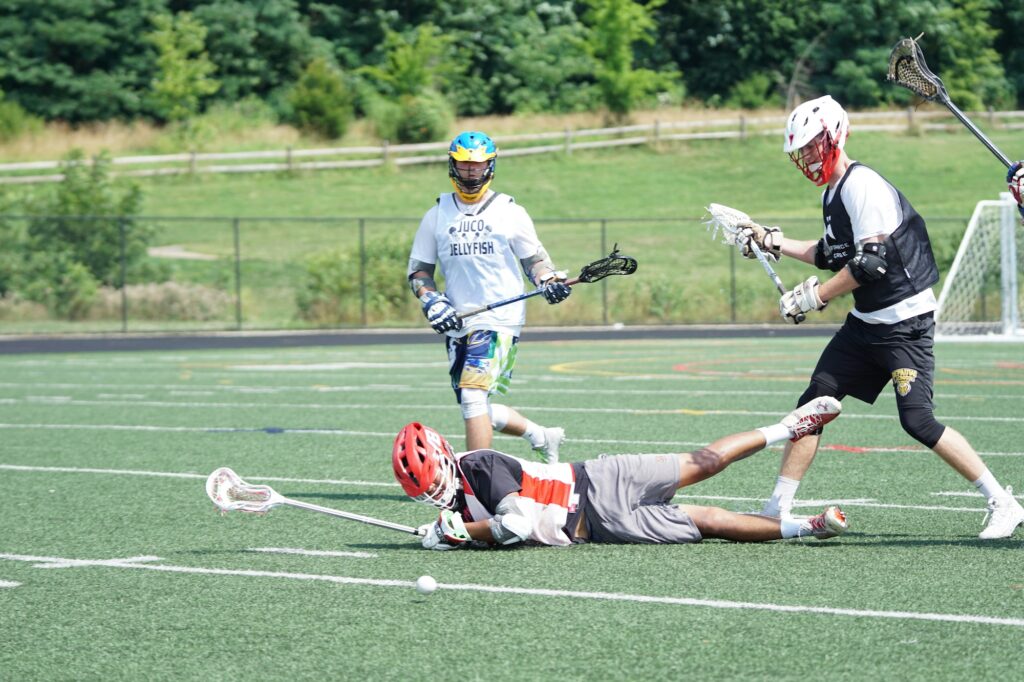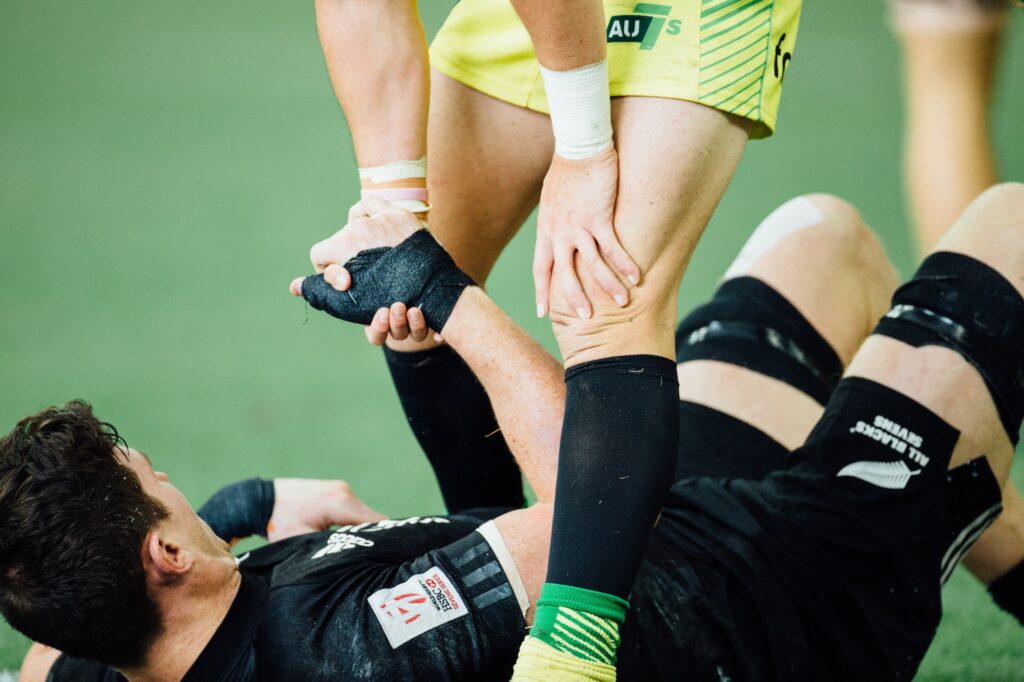Recovering from Sports Injuries with Physiotherapy

If you’re an athlete, you know that injuries are an unfortunate reality of playing sports. Whether it’s a sprained ankle, torn ligament, or muscle strain, sports injuries can be painful and frustrating. However, with the help of physiotherapy, you can recover from your injury and get back to doing what you love.
Physiotherapy is a type of treatment that focuses on restoring movement and function to the body. It involves a variety of techniques, including exercises, stretches, and manual therapy, to help reduce pain, improve mobility, and promote healing. With the guidance of a physiotherapist, you can develop a personalized treatment plan that targets your specific injury and helps you get back to your pre-injury level of activity.
At Lake Country Physiotherapy in Orillia, we specialize in treating sports injuries and helping athletes recover from their injuries. Whether you’re a weekend warrior or a professional athlete, we’re here to help you recover from your injury and get back to doing what you love. So if you’re dealing with a sports injury, don’t wait – schedule an appointment with Lake Country Physiotherapy today and start your journey to recovery.
Understanding Sports Injuries
If you’re an athlete or someone who regularly engages in sports, you’re no stranger to injuries. Whether it’s a sprain, strain, fracture, or even a concussion, injuries are an unfortunate part of the game. However, with the right knowledge and treatment, you can recover from sports injuries and get back to doing what you love. In this section, we’ll explore the different types of sports injuries, common causes and risk factors, and the physiology of injury and healing.
Types of Sports Injuries
Sports injuries can be broadly classified into two categories: acute and overuse injuries.
- Acute injuries, such as sprains, strains, and fractures, occur suddenly and are usually the result of a traumatic event.
- Overuse injuries, on the other hand, develop gradually over time and are caused by repetitive stress on the body. Examples of overuse injuries include tendinitis and bursitis.
Common Causes and Risk Factors
There are several common causes and risk factors associated with sports injuries. These include:
- Poor conditioning or training techniques
- Overuse or repetitive stress on the body
- Inadequate warm-up or stretching
- Age (older athletes are more prone to injury)
- Improper equipment or footwear
- Previous injury or surgery
The Physiology of Injury and Healing
When an injury occurs, the body goes through a complex healing process. Inflammation is the body’s initial response to injury, which helps to bring blood and nutrients to the injured area. This is followed by the proliferation phase, where new tissue is formed to replace the damaged tissue. Finally, the remodeling phase occurs, where the new tissue is strengthened and reorganized to function properly.
Physiotherapy plays a crucial role in the healing process, as it helps to reduce pain and inflammation, improve range of motion, and strengthen injured tissues. By working with a physiotherapist, you can develop a customized treatment plan that addresses your specific injury and helps you get back to doing what you love.
In conclusion, understanding sports injuries is key to preventing and recovering from them. By knowing the different types of injuries, common causes and risk factors, and the physiology of injury and healing, you can take steps to protect yourself and optimize your recovery.
Comprehensive Assessment by a Physiotherapist
When you suffer a sports injury, the first step towards a successful recovery is a comprehensive assessment by a physiotherapist. This assessment will help the physiotherapist understand the extent of your injury and develop an individualized treatment plan that will help you recover as quickly and safely as possible.
Physical Examination and Diagnosis
The first step in the assessment process is a physical examination. The physiotherapist will examine the injured area and surrounding tissues, looking for signs of inflammation, swelling, or other damage. They may also perform range of motion tests to evaluate your flexibility and mobility.
Based on the results of the physical examination, the physiotherapist will then make a diagnosis. This diagnosis will help guide the rest of the assessment process and inform the development of your treatment plan.
Creating an Individualized Treatment Plan
Once the physiotherapist has diagnosed your injury, they will work with you to create an individualized treatment plan. This plan will be tailored to your specific injury, as well as your personal goals and needs.
Your treatment plan may include a variety of different therapies, such as manual therapy, exercise therapy, and modalities like heat or ice. The goal of your treatment plan will be to reduce pain, improve functionality, and promote healing.
Setting Realistic Goals and Timeframes
As part of your treatment plan, the physiotherapist will help you set realistic goals and timeframes for your recovery. These goals may include milestones like regaining full range of motion or being able to return to your sport or activity.
By setting these goals and timeframes, you will have a clear understanding of what to expect during your recovery process. This can help you stay motivated and committed to your rehabilitation program.
In conclusion, a comprehensive assessment by a physiotherapist is crucial for successful sports injury rehabilitation. By conducting a thorough physical examination, creating an individualized treatment plan, and setting realistic goals and timeframes, your physiotherapist will help you recover as quickly and safely as possible.

Physiotherapy Treatments for Sports Injuries
When it comes to recovering from a sports injury, physiotherapy is an effective treatment option that can help you rehabilitate and get back to your active lifestyle. Physiotherapy treatment modalities are varied and can be tailored to your specific needs and injury.
Manual Therapy Techniques
Manual therapy techniques are hands-on treatments that aim to improve joint mobility, reduce pain, and increase flexibility. These techniques include massage, mobilization, and manipulation. Massage is a common technique that involves applying pressure to soft tissues to promote relaxation and reduce muscle tension. Mobilization and manipulation are techniques that involve moving joints through their range of motion to improve mobility and reduce pain.
Therapeutic Exercises and Stretches
Therapeutic exercises and stretches are an important part of physiotherapy treatment modalities. These exercises are designed to improve strength, flexibility, and range of motion. Your physiotherapist will create a customized exercise program that is tailored to your specific needs and injury. This program may include exercises to improve balance, stability, and coordination.
Stretches are also an important part of physiotherapy treatment. They can help improve flexibility and reduce the risk of further injury. Your physiotherapist will show you how to perform stretches safely and effectively.
In conclusion, physiotherapy treatment modalities are a comprehensive and effective way to rehabilitate from a sports injury.
Conclusion
In conclusion, sports injuries can be a major setback for any athlete, but with the right rehabilitation and recovery plan, you can get back to your sport in no time. Physiotherapy is a crucial aspect of this plan, as it helps to not only treat the injury but also prevent future injuries.
Through physiotherapy, you can regain strength, flexibility, and range of motion in the injured area. This process may involve exercises, stretches, and other techniques that are tailored to your specific injury and needs. Your physiotherapist will work with you to create a personalized plan that will help you achieve your goals.
Rehabilitation is a process that requires patience and dedication. It is important to follow your physiotherapist’s instructions and attend all scheduled appointments. This will help ensure that you are making progress and that your injury is healing properly.
If you are in need of physiotherapy for a sports injury, we encourage you to visit Lake Country Physiotherapy in Orillia. Our team of knowledgeable and experienced physiotherapists will work with you to create a personalized plan that will help you recover and get back to your sport. Don’t let a sports injury hold you back – take action and start your road to recovery today.
